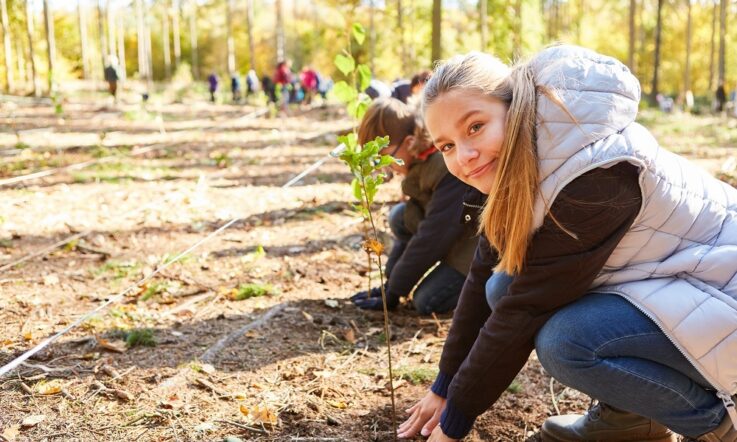This podcast from Teacher is supported by the Victorian Government. Generous financial incentives are available for qualified early childhood teachers and educators to take up positions across Victoria. Relocation support is also available. Learn more about opportunities at vic.gov.au/kinder.
Thanks for listening to this episode of Teacher Staffroom, where we catch you up on the latest evidence, insight, and action. I'm Rebecca Vukovic.
It is widely acknowledged that teaching is a stressful job, and the global events of the past few years have added an enormous amount of pressure to those working in education. It is therefore crucial that the health and wellbeing of teachers and school leaders is prioritised. In today’s episode I’m going to share with you some of the pieces we’ve published on the topic of teacher health and wellbeing, including a Q&A with high school teacher and author Sue Webb, who talks about her book Teachers Cry Too and shares her struggle with, and recovery from, mental illness. Later on in the episode I’ll also share some of the articles we’ve published on the topic of behaviour management, and some pieces from experts in education on a range of topics that may be of interest. Let’s get started.
The first piece I’d like to share with you is a Q&A we did with high school teacher and author Sue Webb, who has been in the profession for more than 30 years. Her book Teachers Cry Too shares her struggle with, and recovery from, mental illness. In the Q&A, Teacher editor Jo Earp asks Sue about what prompted her to share her story with others, how she rebuilt her own health and wellbeing, and how she believes school leaders can better support staff on their own wellbeing journeys. Here’s a quote from Sue where she’s discussing why schools can’t afford to ignore staff wellbeing at a time when universities report a decline in the number of initial teacher training applications, and many teachers are either quitting or reducing their workloads, all while school leaders are retiring early, due to heavy workloads and the added pressure of teacher shortages. Sue says:
Schools can’t afford to ignore the need to prioritise staff wellbeing in such a climate. The more pertinent question is how the profession can respond, and I think we’re scrambling. Many of the wellbeing initiatives I see in schools are well-intentioned but are still focused on boosting morale. Whilst a good starting point, without a whole-school wellbeing strategy which is embedded in school culture and adequately prioritised, funded, and resourced, success will be limited.
Self-care is an important component of wellbeing in the workplace, but perhaps more challenging is how schools can implement systemic, long-term change so that the system and the people in it are not constantly trying to operate beyond capacity.
After reading the full Q&A on teachermagazine.com, here are some questions that you could consider, either on your own or in your next team meeting.
As a teacher, have you noticed any changes in how any of your colleagues are acting? Have you noticed them becoming more withdrawn, lacking confidence or self-esteem? If so, do you have any systems in place to get them the support they need?
Still on the topic of health and wellbeing, the 12th annual Australian Principal Occupational Health, Safety and Wellbeing Survey has been released, and it shows school leaders are under increasing pressure and stress. Part of the survey includes rating a list of 19 sources of stress on a scale of 1-10. On Teacher, we published an infographic that shares some key insights from the 2022 report, and how the top 5 sources of stress for school leaders have evolved over time. You can view the infographic and all the articles I mention today in the podcast transcript published on our website, teachermagazine.com
Here is something to think about:
As a school leader, what are the main sources of stress in your job? Do you regularly set time aside to focus on your own health and wellbeing? How could you incorporate this into your daily or weekly routine?
Coming up: we’ll be sharing some of the expertise we’ve published on Teacher this month, as well as an update on our latest episode of School Assembly. But first, here’s a quick message from our sponsor.
Victoria needs more Kinder teachers and educators. Make the move and you’ll be rewarded with $9000 plus relocation support. So now you can turn a rewarding career into a great adventure. Learn more at vic.gov.au/kinder. Best start, best life. Authorised by the Victorian Government, Melbourne.
Moving on now, I mentioned in the intro that I’ll be sharing some of the expertise that we published on Teacher this month. First up, we have a Q&A that we did with Professor Pauline Taylor-Guy – Director of School and System Improvement at the Australian Council for Educational Research. She joins us to discuss the pioneering National School Improvement Tool that was developed by ACER and the Queensland Department of Education just over a decade ago. Since then, it has underpinned school improvement in Australia and helped to improve teaching and learning in thousands more schools around the world. It has just been updated to reflect the latest evidence about what leads to every student learning successfully. In the Q&A Pauline chats about the new tool, its evidence base, and the role of leaders, wellbeing and student voice in school improvement.
The next piece I’d like to share was an interview with English teacher and 2021 Reading Australia Fellowship recipient Edwina West. My colleague Dominique Russell spoke with Edwina about her research project, that explored how can schools encourage students that are capable readers, but have no interest in reading for pleasure, to read more frequently? In the article, Edwina shares how, through her Fellowship, she created a resource to help teachers and teacher librarians better select books for students. She also discusses how she has worked to build a culture of reading in her school and while it can be challenging, it involves continued buy-in from staff, students and the wider school community. On that topic, she says:
I think the number one thing that schools need to do if they're trying to build a reading culture is to get the staff to buy-in first. It's about educating staff about why reading is important and also having parents’ buy-in. If young people see the adults around them buying into the reading culture, then it's going to naturally follow.
The next piece of expertise that I wanted to mention was a submission from researchers at Macquarie University and the University of Wollongong. In their article, Emma Burns, Penny Van Bergen, Annie Leonard and Yusriya Amin share findings from the study that identified 4 different types of teacher-student relationships, and how these relationships are associated with high school students’ science motivation. In the article they write:
The quality of high school students’ relationships with their teachers are central to their personal and academic success. Research across a range of teaching contexts shows that high-quality teacher-student relationships (TSRs) support students’ engagement, achievement, and school attendance. In science specifically, TSRs are associated with improved engagement and confidence. It is clear that TSRs matter for students.
Generally, conversations about TSRs focus on whether a relationship is ‘positive’ or ‘negative’. However, as many teachers know, relationships can be more complex than this. There is a need to move beyond the positive and negative framing of teacher-student relationships to explore the range of relationships that present in a classroom. In doing so, we can start to better understand which features of relationships may be most important for supporting student motivation in Science.
After reading the article and the strategies that they suggest for improving each of the 3 dimensions of TSRs, consider these questions. Which of the dimensions do you consider yourself to be strongest in? Which would you like to improve in? Focus on the dimension you’ve identified as needing improvement and choose one of the strategies to introduce into your practice over the next week.
Another topic that featured prominently on Teacher this month was behaviour management. We published a submission from Katherine Dix, Tom Cain, Karina Stocker and Susannah Schoeffel that discusses 6 key recommendations from a new guidance report called Effective behaviour supports in schools. In the article the authors write:
There is a need for schools to have consistent and clear approaches to behaviour that set and maintain behaviour expectations in lessons and throughout the school environment.
‘Behaviour’ can mean a range of ways students can act in school – including disruptive behaviours, prosocial behaviours, and learning behaviours – any behaviour that supports learning such as paying attention to the teacher or persevering with a difficult task.
Many interconnected factors influence behaviour, so behaviour supports are often used in conjunction with other strategies to support students’ overall learning, wellbeing and engagement.
In a separate piece, we published an infographic that looked at some of the survey statistics from a new country report titled Education Policy Outlook in Australia. It highlighted the fact that ‘the disciplinary climate in schools in Australia was among the least favourable in the OECD according to students' reports in PISA 2018’. The infographic that we published also shows how Australia compares with 11 other countries.
And finally, before I let you go, I wanted to share with you the latest update from Dayton Primary School in Western Australia. You probably know by now that we’ve been following their journey to build a new school from the ground up in our podcast series, School Assembly. Here’s a short clip from Episode 8, it’s Principal Dr Ray Boyd talking about how they have been building a school culture and ethos.
If you look at all the successful schools, well, not just within Western Australia, but probably globally – and by that, I mean a school that sees students achieving in all domains, social, academic where the staff work together as a collective – what you tend to see in the background is a deliberate effort by the leadership team and all involved to ensure that high levels of consistency and clarity exist within the school around processes, around expectations, around everything.
So, nothing is actually left to chance, and excellence essentially requires effort and diligence to the finest detail, and it requires daily effort by everyone in that sense to be effective in what they do. So, it doesn't just happen, there's expectations that are set, there's built-in accountability, and then there's this feeling of ownership from both the students and the staff in bringing that excellence and that achievement about. So, it's not something that just happens serendipitously.
That's all for this episode, and you’re now all caught up on the latest evidence, insight and action. Links to all the content and the resources I’ve mentioned will be in the transcript of this podcast available over at our website, teachermagazine.com.
Subscribe to our podcast channel wherever you get your podcasts from, so you can be notified of any new episodes as soon as they land. If you want to keep listening now though, you can access the 200+ episodes already in our archive. And, while you’re there, we’d love if you could rate and review us.
This podcast from Teacher is supported by the Victorian Government. Generous financial incentives are available for qualified early childhood teachers and educators to take up positions across Victoria. Relocation support is also available. Learn more about opportunities at vic.gov.au/kinder.



